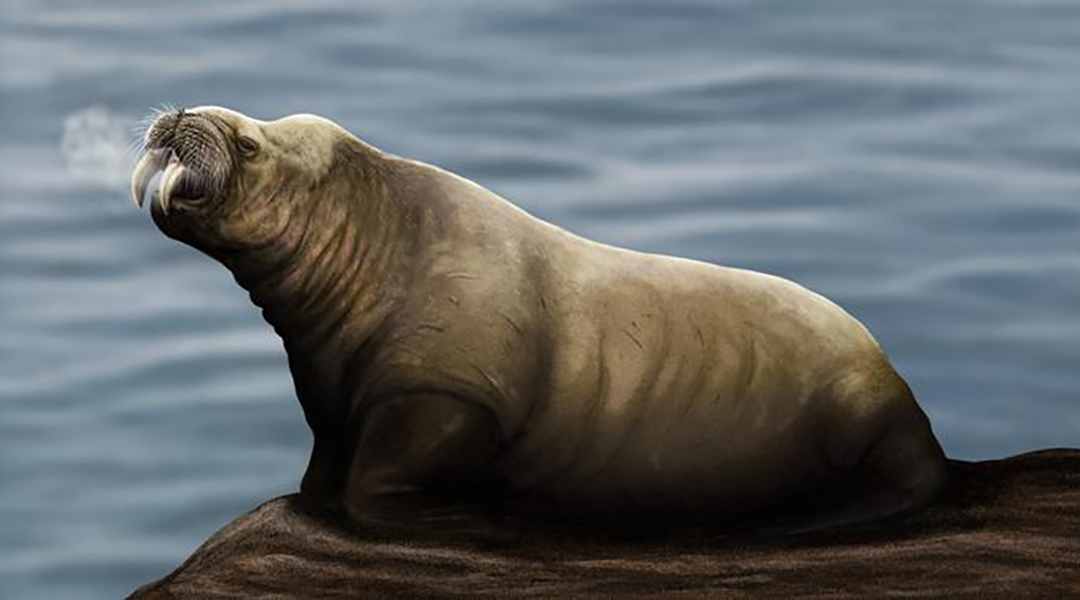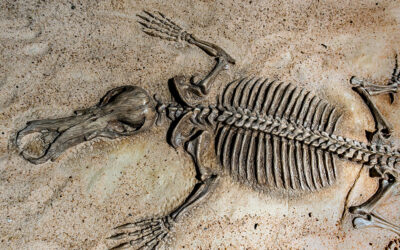While the walrus is the only surviving member of the Odobenidae family, several extinct species once roamed the planet. The modern-day walrus is restricted to the northernmost areas of the world but extinct genera were found as far south as Morocco.
Now, researchers have identified a new species of Ontocetus, an extinct genus of the Odobenidae family, using large teeth and jaw bones. Named Ontocetus posti, the species likely fed through suction, in a manner like the modern walrus.
Mathieu Boisville, a researcher at the University of Tsukuba, in Japan, and colleagues report that the species independently evolved to have the feeding behavior — an example of convergent evolution.
“The characteristics of the new species show that Ontocetus would have specialized in suction-feeding at the end of the Pliocene (ca. 2.6 million years ago) following the global climatic cooling of the time, filling the ecological niche of the modern walrus, absent at the time in the North Sea and North Atlantic” said Boisville, in an email to Advanced Science News.
For their analysis, the research team re-examined mandibles discovered numerous years ago off the coast of the United Kingdom and Belgium. The fragmented mandible found in Antwerp, Belgium, was originally classified as belonging to Ontocetus emmonsi, a species not made for suction feeding.
On closer inspection of the mandibles, however, the researchers found that some oral features matched the extinct Ontocetus emmonsi and others, the Odobenus family to which the extant walrus belongs. The new species had a lower canine larger than the cheek-teeth, a lower incisor and four post-canine teeth — all features that placed it in the Ontocetus genus. But it also had well-defined mandibular features akin to those found in the Odobenus genus.
“One of the most attractive features of the new species’ mandibles is that they are fused, as in the modern walrus,” added Boisville. “The fact that the mandible is fused means that the animal is less subject to tensile forces inside the oral cavity when sucking in its food using the particular technique of suction-feeding.” For instance, the extant walrus sucks molluscs out of their shells using this specialized mouth.
Members of the Ontocetus genus preferred temperate to warmer waters. While the Ontocetus genus originally evolved in the North Pacific Ocean, they eventually made their way to Morocco, leaving behind fossil deposits.
From the western North Atlantic, they were welcomed by the warmer waters of the North Sea during the Late Pliocene (3.6 to 2.5 million years ago). But as the climate cooled, mollusks in the North Sea were affected by the sudden change in climate as was the isolated Ontocetus, eventually leading to its extinction.
The Ontocetus and Odobenus genera did not share a direct common ancestor nor inhabit the planet during the same time period. The latter emerged nearly a million years after Ontocetus died out and thrived in the cold waters of the north. So, while they likely favored similar prey, competition between the two did not lead to the extinction of Ontocetus posti.
Boisville added that more discoveries of specimens and reassessment of known specimens is needed to better understand the novel species.
Reference: Mathieu Boisville, et al., New species of Ontocetus (Pinnipedia: Odobenidae) from the Lower Pleistocene of the North Atlantic shows similar feeding adaptation independent to the extant walrus (Odobenus rosmarus), PeerJ (2024). DOI: 10.7717/peerj.17666
Feature image credit: Jaime Bran
















